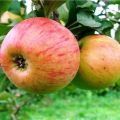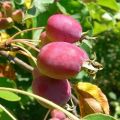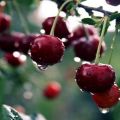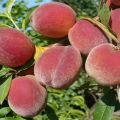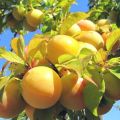Description of the Persianka apple variety, yield characteristics and growing regions
If you need to grow an apple tree in cold climates, Persianka is a very good choice. This tree was obtained by crossing Kungur Pineapple and Peach. This fruit tree requires moderate maintenance and protection from scab, and in return resists frost and drought well. The fruits of this variety are delicious and beautiful.
Breeding history
The Persianka variety was bred at a gardening station in Sverdlovsk by breeders L.A. Kotov and P.A.Dibrov. When obtaining this fruit tree, the varieties of apple trees Peach and Kungurskiy Pineapple were used. It was tested in 1990. The variety is zoned in the Volgo-Vyatka and Ural regions. It is also suitable for growing in the Orenburg region.
Description of the Persianka variety
The Persian apple tree is characterized by a spherical crown, thick branches, grows up to 6 meters and has a dark brown bark. The crop is formed on the ringlets.
The leaves of the tree are rough. It blooms with white, large flowers, collected in inflorescences.
The Persian is considered self-fertile, that is, it should be planted with other apple trees of late varieties, such as Skryzhapel, Antonovka, Slavyanka, Pepin Shafranny.
Fruit descriptions by gardeners:
- they reach a weight of 120 grams;
- have a juicy creamy pulp;
- the shape of the fruit is round, and sometimes round-cylindrical;
- the ribbing of the fruit does not stand out;
- the color of apples ranges from light green to cream;
- on those fruits that are closer to the sun, there is a blush;
- fruits have a glossy rind with a slight waxy coating;
- the crop ripens in the first autumn month;
- keep fruits for up to six months at a temperature of several degrees Celsius.
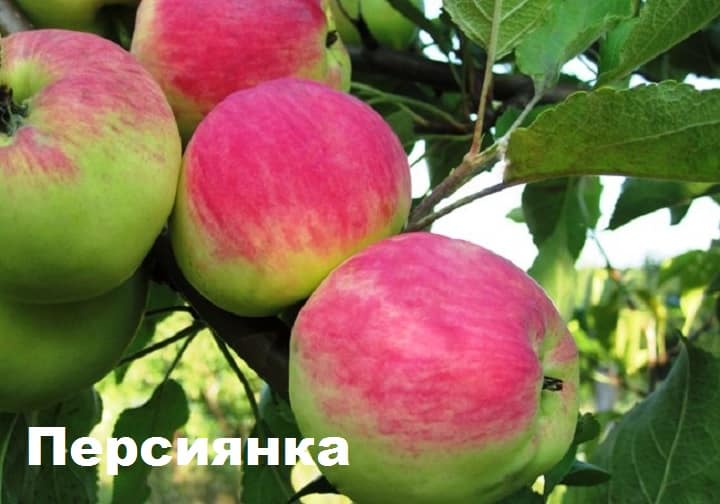
The appearance and taste of Persianka apples sometimes change for the worse at unfavorable times.
What are the pros and cons?
Among the advantages are the large-fruited varieties, transportability, excellent taste, a long shelf life of fruits, as well as the drought resistance and frost resistance of the plant. This plant is also often used when breeding new varieties, as it gives excellent offspring. The disadvantage is insufficient immunity to scab, therefore, in conditions of high humidity, the Persianka apple tree suffers from this fungal disease.
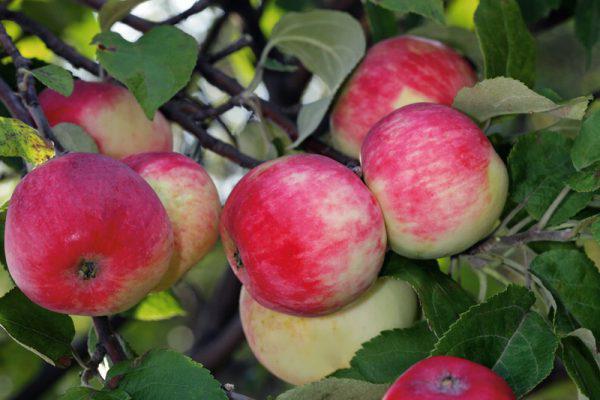
Fruit tasting
The fruits of this variety are sweet and sour in taste, contain a lot of juice in the pulp, crunch. Ripe fruits have a light apple flavor.Experts give a tasting score of 4.5 points, and under unfavorable growing and storage conditions, it will be 3.8 points. Until removable ripening, the fruit sticks well to the trees, but with a sharp gust of wind, they fall off very quickly.
The harvest is stored in wooden boxes placed between layers of paper. The fruit tastes great after taking it off. They eat fruits both fresh and processed (jam, jam, compotes).
Winter hardiness and disease
This variety is recommended for cultivation in harsh climates due to its excellent regenerative capacity. The tree can easily withstand temperatures of 40 ° C frost, and it also has increased resistance to drought.
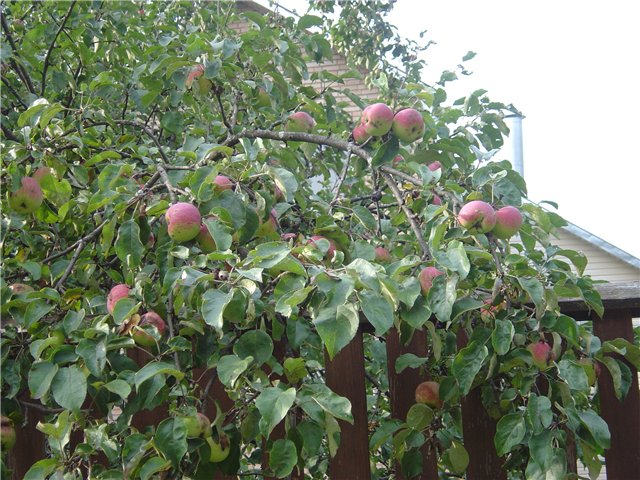
The Persian apple tree has an average immune resistance to most diseases, but scab is an exception. In conditions of high humidity, it is often susceptible to this fungal disease.
To provide protection against apple scab every spring they do sanitary cleaning of the crown for better wind blowing and sunshine. Fallen leaves must be removed and burned. Then, the wood is further processed at the initial stage of the appearance with antifungal drugs.
Productivity and frequency of fruiting
Persianka apples ripen in early autumn, and you can eat them right away. If you do not take into account the frequency, the yield of the variety is about 100 kilograms from each tree. Subject to the basic rules of agricultural technology, 200 kilograms of fruit are removed from it.

The apple tree begins to yield 6-7 years after budding. The Persian apple tree has no periodicity, so it bears fruit annually.
Subspecies of the Persianka variety
All described subspecies have a similar name, but there are columnar Persian apple trees. This tree has a trunk in the center, and the number of shoots is minimal, and they are all very short. This gives additional compactness and the ability to plant a larger number of apple trees in a certain place.
There is also a creeping Persian. The plant has a low arrangement of shoots that slope downward. This feature helps to hide them in the snow in winter and prevent them from freezing. Winter Persian has an even higher winter hardiness than the classic variety. The dwarf tree was grown specifically for the convenience of harvesting.
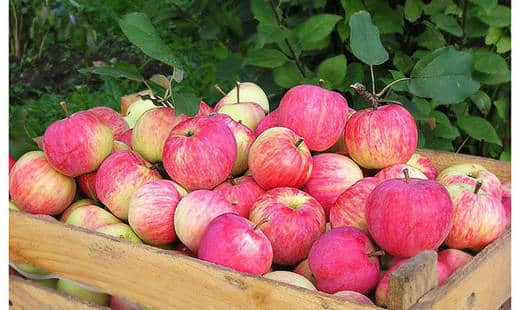
The best regions to grow
At the initial stage of breeding the variety, this fruit tree was zoned in the Urals and adapted to severe, frosty winters. Then, by experience, we saw good survival and fruiting in the Volga-Vyatka region, the Orenburg region and in other areas of the north.
There is a warning not to plant it in a humid climate, since it will be affected by scab from year to year.
Then there can be no talk of any presentation of apples. In all regions where it is planted, gardeners are surprised by its large-fruited and abundant fruiting.
The disadvantage of the Persian apple tree in the form of insufficient scab resistance pays off for its other advantages, such as withstanding severe frosts and droughts, large-fruited and long shelf life of fruits. The combination of all the strengths of the variety makes it one of the best in the northern regions of the country.


